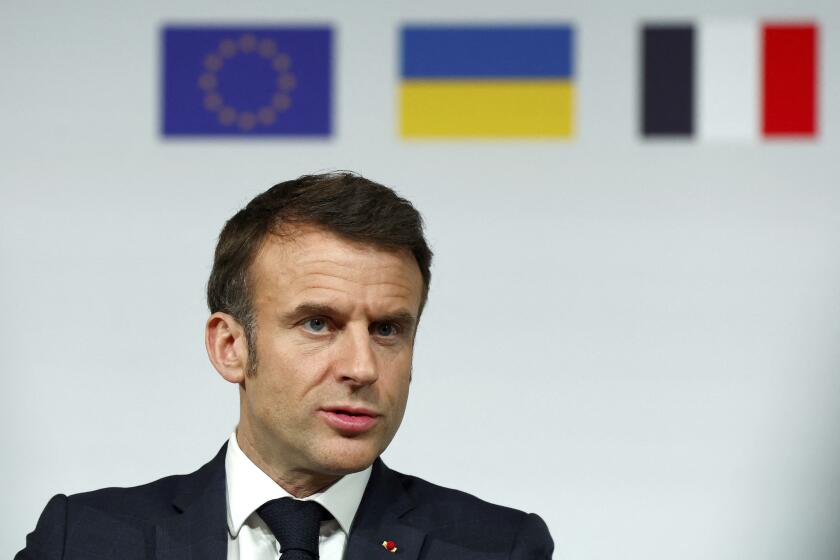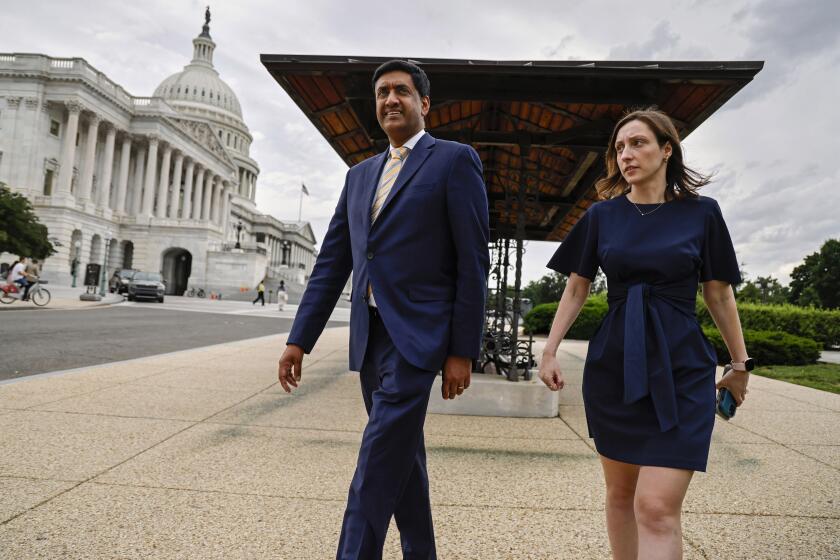MAGA figures say far-right wins in Europe are good news for Trump. Are they right?

WASHINGTON — The elections were overseas, but for members of the MAGA movement, the rightward tilt in the European Parliament was still a chance to declare victory.
Steven K. Bannon, who led former President Trump’s 2016 campaign and served as a chief advisor in the White House, compared this week’s election results to the decision by British voters in June 2016 to leave the European Union — a historic move that preceded Trump’s surprise victory by five months.
“Absolutely, tectonic plate shift,” Bannon declared on his podcast Monday.
The European Union and the United States have very different political systems and practices, among them the multi-party coalition-building that goes on in Europe.
But there are some important lessons for the United States.
Who won the European Parliament election?
Centrists won a clear overall victory in the 27-nation European Union. The center-right European People’s Party of Germany’s Ursula von der Leyen, president of the bloc’s European Commission, won the most seats in the 720-member Parliament, according to preliminary results.
But the far right made significant gains, taking about 20% of the parliamentary seats. To secure a second term, Von der Leyen has hinted that she may seek a coalition alliance with the Italian Brotherhood, Prime Minister Giorgia Meloni’s party with neo-fascist roots.
The ultranationalist Alternative for Germany became that country’s second-largest political party, outpacing the party of German Chancellor Olaf Scholz.
European Parliament elections yield victory for centrists, but in France, far-right landslide triggers snap parliamentary elections.
French President Emmanuel Macron called snap elections after the far-right National Rally won twice as many seats as his own party. Belgian Prime Minister Alexander De Croo resigned after his party was similarly thrashed.
Still, not all of the 27 EU countries had such dramatic results.
“I don’t think it was Europe completely changing its character,” said Michael K. Miller, professor of political science and international affairs at George Washington University. “It’s essentially a reelection and a reaffirmation of the center right” and “a tilting toward the far right, but not the far right winning everything.”
Why are Trump supporters so excited?
Immigration, inflation and a rejection of the mainstream — Trump’s favorite themes — have all played a role in the far right’s rise in Europe.
“You cannot deny that there is something happening in America, in Europe,” said Matt Schlapp, who runs the Conservative Political Action Conference, of events in the U.S., Hungary and elsewhere that promote right-wing populism. “The themes are 80% the same.”
But the far right won only about 20% of seats in the parliament, not a majority, making it difficult to analogize a Trump victory in America’s two-party system, which requires an electoral college majority, said Andrew Gawthorpe, a lecturer at Leiden University in the Netherlands who researches U.S. politics.
Should President Biden be worried?
It depends on who you ask. Beyond the rise of the right, the election showed a frustration with incumbents that has popped up in other countries, including India, where Prime Minister Narendra Modi won a third term by a surprisingly close margin in recent parliamentary elections.
The “fatigue factor” was especially notable in France, where Macron has held office since 2017, said Max Bergmann, a former Obama administration official who directs the Europe, Russia, and Eurasia Program at the Center for Strategic and International Studies. He compared the far right’s success in Germany to a U.S. midterm election, in which voters send a message to their top leaders without necessarily ousting them. President Obama, for example, saw his party lose big in the 2010 congressional elections but still won his own reelection two years later.
The EU election shows the power of immigration as a wedge issue and reinforces the “absolute necessity” that Democrats in the U.S. focus on kitchen-table economics and abortion — the latter an issue that European parties did not have, said Celinda Lake, who led President Biden’s 2020 polling, in an email.
“It shows energy on the right,” she added. “These are things we have seen but [now] affirmed.”
Though Obama rebounded in 2012, Biden’s future is unclear, and the EU election suggests that some voters on both sides of the Atlantic share similar complaints. “It’s concerning for sure,” Lake said.
Rep. Ro Khanna, a Silicon Valley Democrat, has touted himself as a crossover artist who can help Biden with his biggest critics on the left, including young people and Arab Americans. But he has his own ambitions.
The center held in Europe, but why is it weakening?
Gawthorpe argues that the center in Europe is weakening for the same reason it is in the U.S.: Working-class voters are frustrated with societal, racial and cultural change.
These voters — whom he compares to onetime Democrats in the upper Midwest — have traditionally allied with left-wing parties over economic issues but are shifting to far-right parties in Europe, leapfrogging over center-right parties that are moderate on immigration and culture-war issues. The movements have appealed to rural voters in both continents.
“Isolationist and xenophobic messages do work — they speak to people’s fears and concerns in a way voters find compelling,” said Allison McManus, managing director for national security and international policy at the Center for American Progress, a left-leaning think tank. “The rise of the far right in Europe is not something we can see as separate from the far right in the United States,” she added. “There’s learning that’s happening from these parties across the Atlantic.”
What difference does a two-party system make?
It’s big in this instance because voters in many European countries can choose between a multitude of parties across the political spectrum. That makes it easier for far-left and far-right parties to win power but harder for them to gain a majority.
In the U.S., Trump has basically taken over the Republican Party and remade it — a different path than European parties, which are more accustomed to building a coalition.
Still, some far-right parties in Europe seem inclined to reach out to other parties. That has been the case with Meloni, Italy’s far-right prime minister, who won her election two years ago.
In France, Marine Le Pen is trying to accomplish the same feat. Le Pen’s nationalist, anti-immigration, populist National Rally Party has been challenging the establishment for decades. A victory for Le Pen’s party in the upcoming French election would obviously send an even stronger message, given France’s influence and close ties with the U.S.
Times staff writer Laura King in Berlin contributed to this report.
More to Read
Get the L.A. Times Politics newsletter
Deeply reported insights into legislation, politics and policy from Sacramento, Washington and beyond. In your inbox three times per week.
You may occasionally receive promotional content from the Los Angeles Times.













